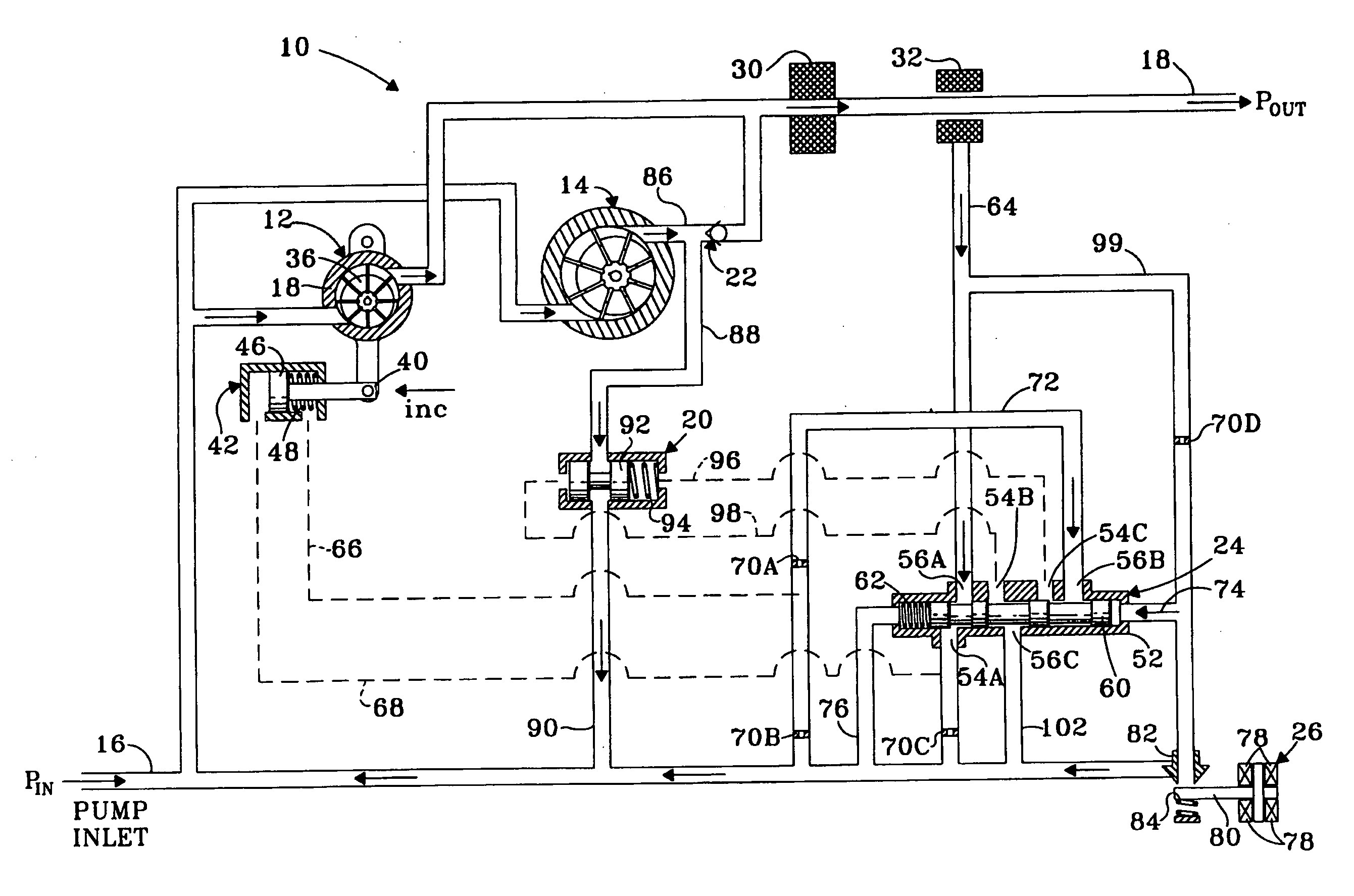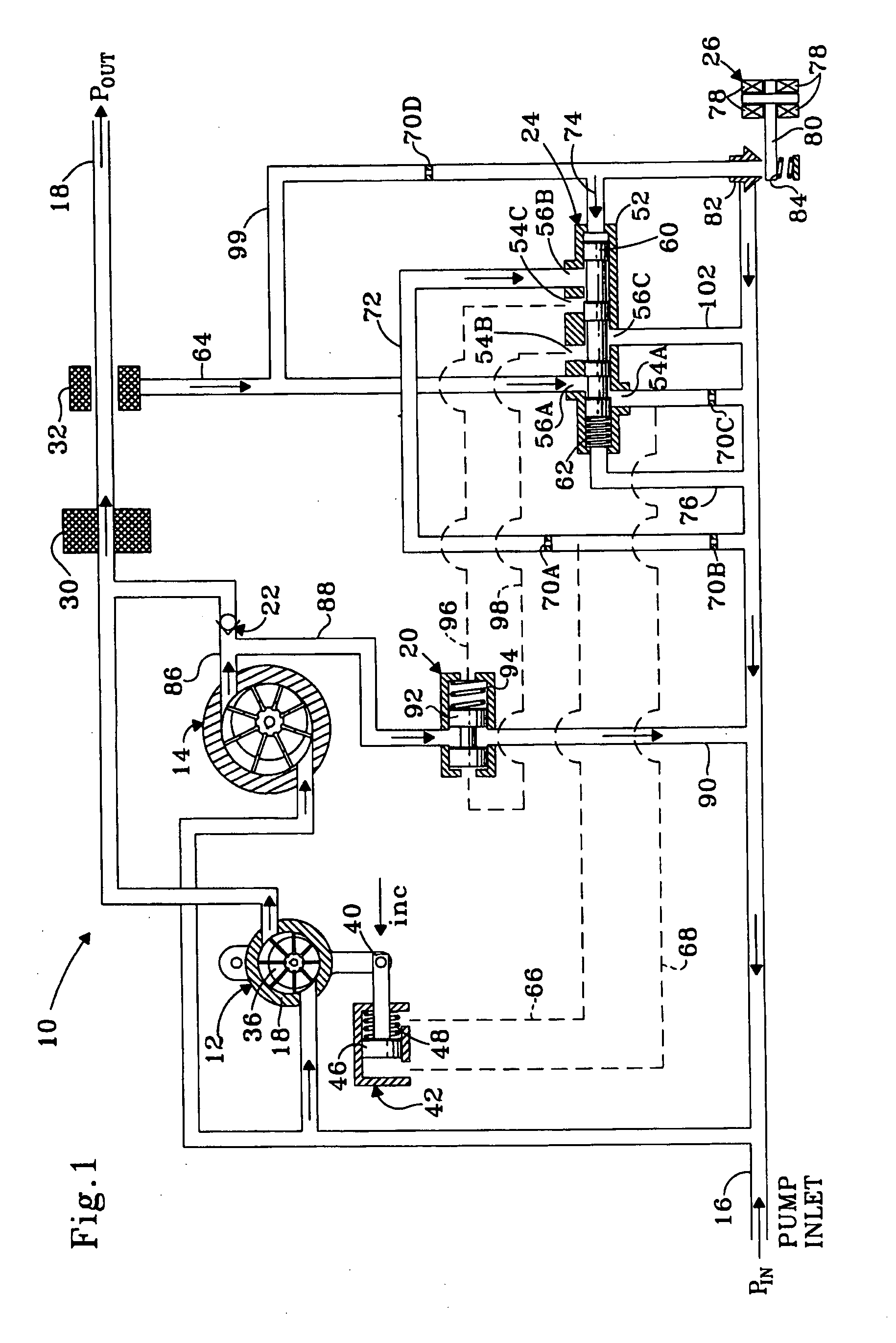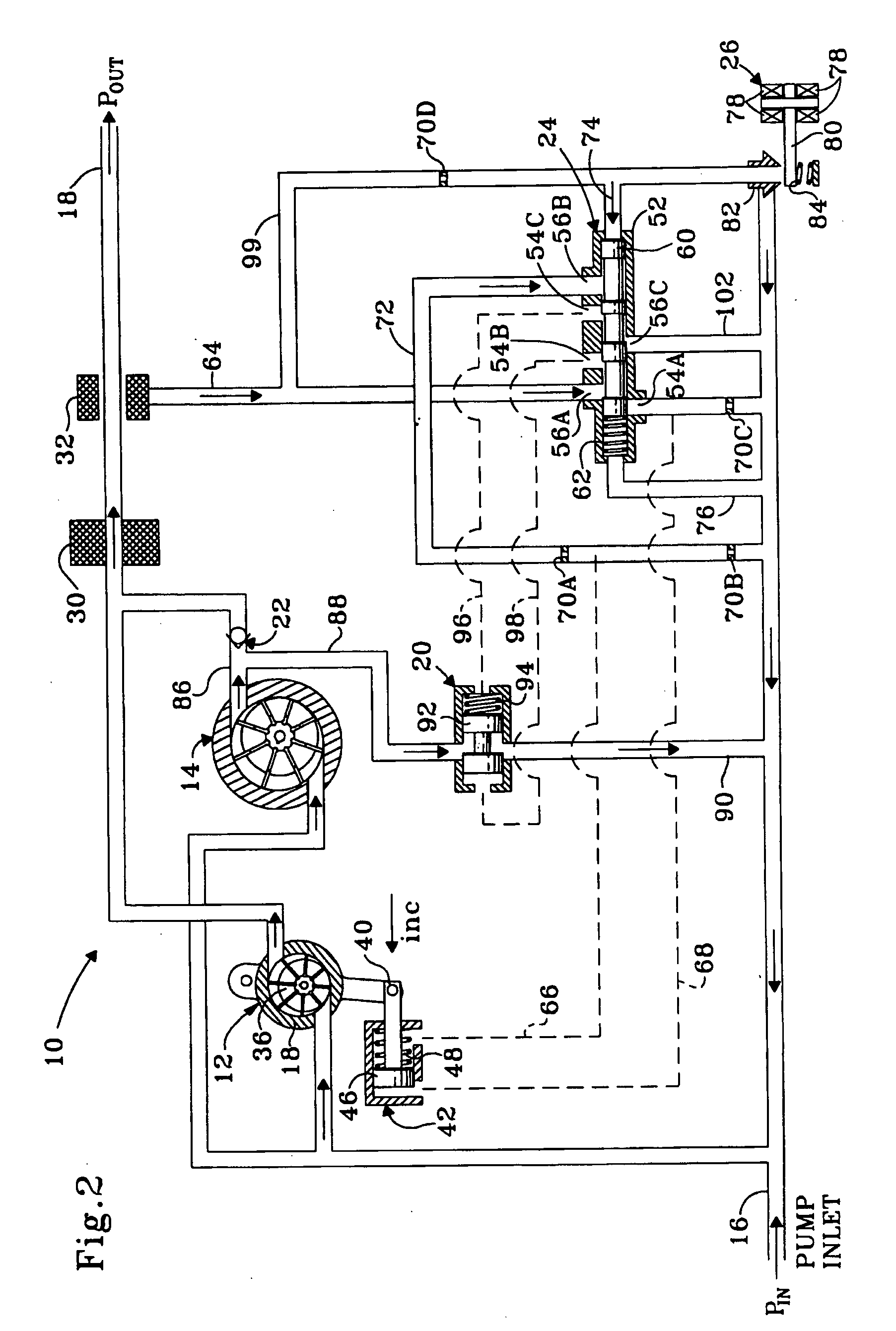High Efficiency 2-Stage Fuel Pump and Control Scheme for Gas Turbines
- Summary
- Abstract
- Description
- Claims
- Application Information
AI Technical Summary
Benefits of technology
Problems solved by technology
Method used
Image
Examples
Embodiment Construction
[0021]For clarity throughout the following description, arrows are shown within the lines of the FIGS. 1 and 2 to indicate the direction in which the fuel flows and an annotated letter “P” is shown to indicate pressure at certain locations. All relative descriptions herein such as left, right, up, and down are with reference to the Figures, and not meant in a limiting sense. Additionally, for clarity common items such as filters and shut off solenoids have not been included in the Figures as would be appreciated by those of ordinary skill in the pertinent art.
[0022]Referring now to FIG. 1, there is illustrated a schematic representation of a two-stage fuel pump system in accordance with the subject invention which is designated generally by reference numeral 10. In brief overview, the two-stage system 10 uses a variable first stage for steady-state operating conditions. During transient conditions that exceed the capacity of the first stage, a second fixed stage supplements the flow...
PUM
| Property | Measurement | Unit |
|---|---|---|
| Pressure | aaaaa | aaaaa |
| Flow rate | aaaaa | aaaaa |
| Area | aaaaa | aaaaa |
Abstract
Description
Claims
Application Information
 Login to View More
Login to View More - R&D
- Intellectual Property
- Life Sciences
- Materials
- Tech Scout
- Unparalleled Data Quality
- Higher Quality Content
- 60% Fewer Hallucinations
Browse by: Latest US Patents, China's latest patents, Technical Efficacy Thesaurus, Application Domain, Technology Topic, Popular Technical Reports.
© 2025 PatSnap. All rights reserved.Legal|Privacy policy|Modern Slavery Act Transparency Statement|Sitemap|About US| Contact US: help@patsnap.com



